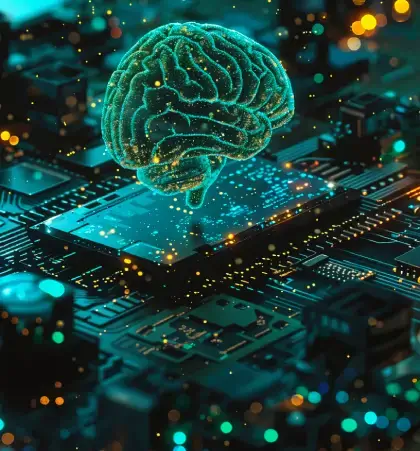
AI with Python – Machine Learning
Machine learning lets computers learn, predict, and make decisions from data.


Machine learning turns data into smart decisions.
Learning is the process of acquiring knowledge or skills through study or experience. Based on this, machine learning (ML) can be defined as a branch of computer science — specifically an application of artificial intelligence (AI) — that enables computer systems to learn from data and improve through experience without being explicitly programmed.
The primary goal of machine learning is to allow computers to learn automatically with minimal human intervention. But how does this learning happen? It begins with observing data, which can come in the form of examples, instructions, or direct experiences. The system then identifies patterns within the data and uses them to make better decisions over time.
Machine learning algorithms enable computer systems to learn from data without being explicitly programmed. Broadly, these algorithms are categorized into supervised and unsupervised learning. Let’s explore some key types:
Supervised Machine Learning Algorithms
Supervised learning is the most commonly used ML approach. It is called “supervised” because the learning process resembles a teacher guiding the system. In this approach, the training data is labeled, and the possible outcomes are known.
For example, given input variables xxx and an output variable yyy, a supervised algorithm learns a mapping function from the input to the output:
y=f(x)
This allows the system to make predictions or decisions based on new, unseen data by applying the learned mapping.
The main goal of supervised learning is to approximate the mapping function so accurately that the model can predict the output YYY for new input data xxx.
Supervised learning problems are generally divided into two types:
Common supervised machine learning algorithms include Decision Trees, Random Forest, K-Nearest Neighbors (KNN), and Logistic Regression.
Unsupervised Machine Learning Algorithms
As the name suggests, unsupervised learning algorithms operate without any supervisor or labeled output. Unlike supervised learning, there is no correct answer or teacher to guide the model — the algorithms identify patterns and structures directly from the input data xxx.
Unsupervised learning problems are mainly of two types:
Common algorithms include K-Means for clustering and the Apriori algorithm for association analysis.
Reinforcement Machine Learning Algorithms
Reinforcement learning (RL) algorithms train systems to make optimal decisions by interacting with an environment and learning through trial and error. The algorithm receives feedback from past actions and continually refines its strategy to maximize desired outcomes.
A common example of a reinforcement learning approach is the Markov Decision Process (MDP). Although less commonly used than supervised or unsupervised methods, RL is powerful for tasks that involve sequential decision-making.